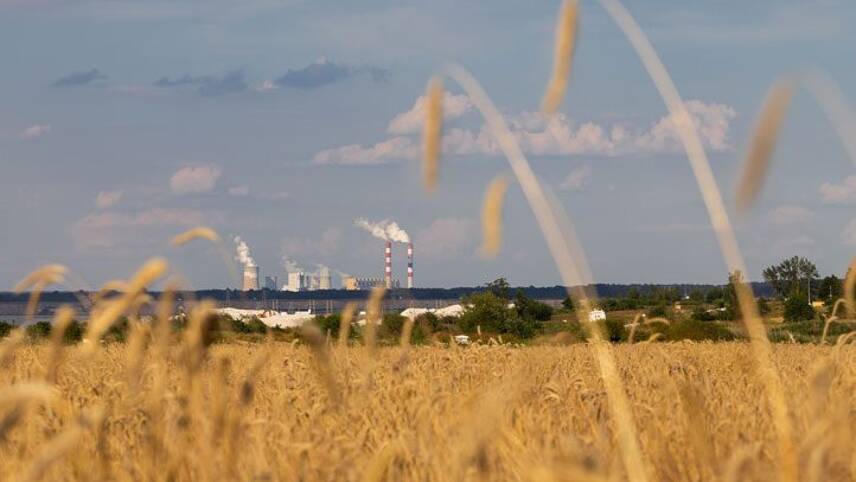Register for free and continue reading
Join our growing army of changemakers and get unlimited access to our premium content

More than 50
The Carbon Capture and Storage Association (CCSA) has today (8 July) published a report on the scaling up of CCUS technologies in the UK over the next decade. With support from engineering consultancy Afry and Cambridge Econometrics, the report explores CCUS opportunities based on the Government’s Ten Point Plan and the Climate Change Committee’s (CCC) Sixth Carbon Budget.
Under the Ten Point Plan, the UK would capture 10 million tonnes of CO2 annually by 2030, whereas the CCC’s modelling on the Sixth Carbon Budget recommends capturing 22 million tonnes per year by 2030. As part of the Sixth Carbon Budget, Prime Minister Boris Johnson has agreed to legislate a new target to reduce national emissions by 78% by 2035.
Under the CCC scenario – the more ambitious of the two – the new report claims that 10,000 new jobs could be created by the mid-2020s, namely in key industrial locations. Moving to deploy CCS early would also create new export opportunities which could create a potential 50,000 jobs while safeguarding more than 50,000 jobs in carbon-intensive industries at risk during the low-carbon transition, such as iron, steel, cement, chemicals and refining.
Funding requirements to deploy CCUS as the necessary scale ranges from £1.2bn to £2.6bn, according to the report. It recommends that the Levy Control Framework, which is set at £8.6bn for 2020/21 and has helped with the commercialisation of renewable technologies could be matched to help develop CCUS.
The CCSA’s head of UK office Olivia Powis said: “All 2030 net-zero scenarios clearly show that CCUS needs to significantly scale up in the 2020s. To do that, the upcoming Comprehensive Spending Review should introduce a long-term funding mechanism for CCUS, just like the Government successfully did ten years ago for the renewable power sector through the Levy Control Framework. The offshore wind boom we’ve seen since then has been one of the UK’s biggest green success stories.
“With similar levels of ambition and foresight today, the current Government could ensure we become a world leader in another green industry this decade, an industry that again plays to our geographical and industrial strengths. By implementing the recommendations in today’s report, the UK can demonstrate to the world its commitment to delivering net-zero, ahead of hosting COP26 later this year”.
The report echoes findings from the Department for Business, Energy and Industrial Strategy (BEIS), which also claims that CCUS could support 50,000 jobs.
The overarching target for CCUS to date has been for the UK to fully decarbonise at least one industrial cluster by 2040. Clusters are seen as less risky locations for deployment as, with dispersed sites, new transportation infrastructure will be needed.
The UK Government has increasingly focused on CCS since setting its legally binding net-zero target. Before then, the previous £1bn competition fund for CCS was actually scrapped by the now-defunct Department for Energy and Climate Change (DECC).
According to the CCC, CCUS is a “non-optional” component of the UK’s transition to net-zero. However, some green groups would like to see Ministers doing more to prioritise technologies that are already mature, alongside nature-based solutions for sequestering carbon, in the short to mid-term.
Negative emissions
In related news, the newly formed Coalition for Negative Emissions has issued the findings in new research conducted with support from McKinsey & Company. It finds that limiting average global temperature increases to 1.5C above pre-industrial levels, as envisioned by the Paris Agreement, would need negative emissions technologies to cover 1.2 gigatonnes of carbon by 2025 – equivalent to more than three times the UK’s annual CO2 emissions.
The Coalition argues that urgent action is required to increase deployment in negative emissions technologies, which include bioenergy with carbon capture and storage (BECCS), direct air capture and storage (DACS), and natural climate solutions (NCS) such as afforestation. The Coalition argues that these technologies are proven and could each account for at least one gigatonne of emissions.
Deploying these solutions at scale could create up to 10 million new jobs worldwide, the Coalition claims. However, current trajectories mean that this threshold for emissions looks set to be missed by an 80% margin. Investment into the technologies will therefore need to increase 30 times over compared to current levels.
Energy UK’s chief executive and founding member of the Coalition for Negative Emissions Emma Pinchbeck said: “Negative emissions technologies will have a big role to play in cutting emissions and as this report shows, are essential to meet the net-zero target.
“We need action to help increase investment in proven technologies to get the scale, time and support needed for further innovation. Most global pathways to achieving decarbonisation in line with 1.5C of warming include negative emissions technologies, so the UK has a massive opportunity to show leadership on this, as the hosts of the international climate negotiations this year.”
edie Explains: Carbon Capture, Utilisation and Storage
What are the different types of CCUS technology? How can businesses benefit from CCUS? And what are the costs associated with CCUS?
edie readers interested in exploring the answers to these and other frequently asked questions about CCUS are encouraged to access the free edie Explains guide on the topic, hosted in association with Carbon Clean. Click here to access the guide.
Matt Mace


Please login or Register to leave a comment.